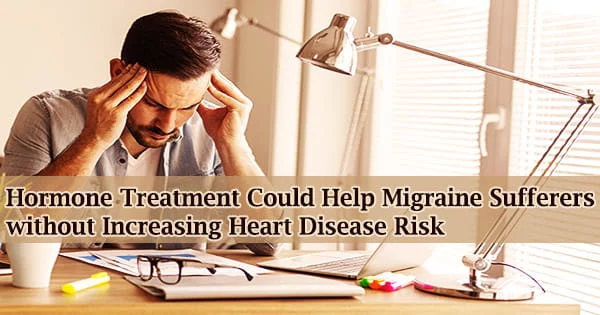Although migraine headaches are frequent in women, they can be difficult to cure in the elderly due to a number of health hazards. Although hormone therapy is useful in treating many menopause symptoms, its safety in the treatment of migraine in women has not been shown.
Using data from the Women’s Health Initiative (WHI), a recent study has shown that it is safe for this population. The study findings will be presented in Philadelphia from October 11–14 at The North American Menopause Society (NAMS) Annual Meeting.
“Hormone therapy use has been on the decline since the WHI clinical trials. Newer data has brought further clarity to its safe use, especially in younger women (age < 60) who are closer to the time of menopause (within 10 years of menopause),” says Dr. Peter F. Schnatz, immediate past president of NAMS and one of the study’s authors.
“Based on this newer data, hormones still have a major role in treating menopause symptoms and preventing bone loss. A number of these women will have migraines. Hence, knowing the risk/benefit profile of hormone therapy in these women is critically important.”
There aren’t many research showing how hormone therapy affects migraines and the ensuing cardiovascular disease. Due to the link between exogenous estrogen use and an elevated risk of stroke in migraine-prone women, hormones are frequently not recommended to migraine sufferers.
Hormone therapy use has been on the decline since the WHI clinical trials. Newer data has brought further clarity to its safe use, especially in younger women (age < 60) who are closer to the time of menopause (within 10 years of menopause). A number of these women will have migraines. Hence, knowing the risk/benefit profile of hormone therapy in these women is critically important.
Dr. Peter F. Schnatz
Based on whether or not the migraines were accompanied by an aura, combined oral contraceptives, also known as birth control pills, should be used with caution or completely avoided in women who have a history of migraines.
To learn more about the connection between migraines, cardiovascular disease events, and their interactions with hormone treatment use, data from 67,903 WHI clinical trial participants were reviewed.
It was shown that women with migraines consumed more vitamin D and calcium and exercised less than those without migraines. Night sweats and hot flushes were also more common in migraine sufferers.
It’s important to note that the association between a history of migraines and a high risk of cardiovascular disease events was not found. Most importantly, there was no effect from hormone therapy on this relationship in terms of treatment safety.
“Since migraines affect one in every four women and women with migraines are often advised to avoid hormone therapy, these findings may have significant public health implications,” says Dr. Jelena Pavlovic, lead author of the study from Albert Einstein College of Medicine in the Bronx.
“We know that changes in estrogen lead to migraines for many women. Yet, there has been very little research focused on migraines through the menopause transition when estrogen levels can fluctuate greatly,” says Dr. JoAnn Pinkerton, NAMS executive director.
“This study clearly demonstrates the need for more research in this area so symptomatic women can benefit from proven therapies.”
Drs. Pavlovic, Pinkerton, and Schnatz are available for interviews before the presentation at the Annual Meeting.





